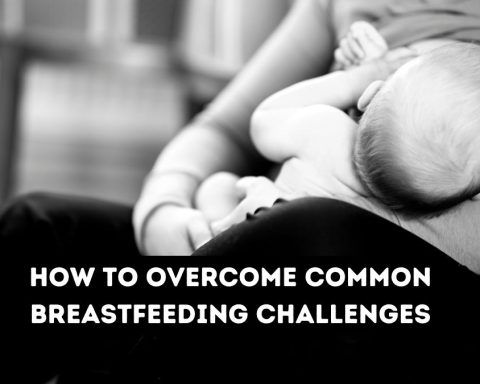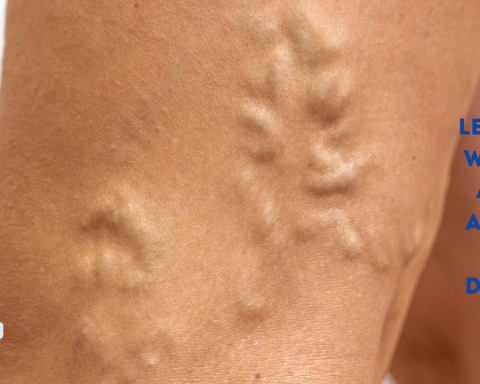Varicose veins are a pretty common condition. It’s estimated that around a third of women and almost a fifth of men get them. They are also one of the most common reasons for vascular surgery. Very few people are aware of what they are and what causes them. This can lead to a lack of understanding of how they’re prevented or treated.
Veins are blood vessels that transport blood back to the heart. Varicose veins are veins with faulty valves.
Normal veins have valves that open and close correctly so that blood smoothly flows through the blood vessels. But, in some veins, these valves can break down over time. This leads to blood accumulating in affected areas and not flowing smoothly back to the heart. This leads to swollen and lumpy veins that can cause discomfort or pain.
While there is no single, definitive cause, there are some things that put you at risk of developing varicose veins. These include:
- Genetic risk: If you have a parent, or grandparent, with varicose veins, your more likely to develop them.
- Age: Varicose veins are almost always found in older individuals. This is because it’s usually caused by a gradual breakdown of the valves in the vein with age.
- Gender: Women are at a greater risk of developing varicose veins. This could come from the impact of hormones like estrogen and progesterone on collagen breakdown. Collagen is found in blood vessel walls.
So higher levels of these hormones may lead to a greater breakdown of the blood vessels.
- Inactivity and obesity: Being inactive and overweight also raise your risk of varicose veins. This is because exercise helps maintain the blood vessel walls. Meanwhile, obesity raises inflammation and contributes to blood vessel “stiffness” and breakdown.
- Pregnancy: The number of pregnancies can also be a risk factor for varicose veins. More pregnancies put you at greater risk.
All of the above areas raise your chances of developing varicose veins. Considering these, we put together a list of things that can help you prevent varicose veins.
These aren’t very helpful for those who already have varicose veins though. So, we also put together a list of the best treatments available for those who already suffer from them.
The Best Ways To Prevent And Treat Varicose Veins
Prevention
Exercise
Like many age-related ailments, exercise is key to keeping varicose veins away. Regular exercise like cardio or weightlifting helps maintain blood pressure and flow.
It also helps increase collagen synthesis and regulate hormone levels. Along with this, it will also fight inflammation and prevent cell damage. These all help keep blood vessels strong and flexible for healthy blood flow and veins. So, keeping a regular exercise regimen is key to preventing varicose veins later in life.
Enough Rest when Pregnant
When you’re pregnant, carrying a heavy load around with you becomes a 24-hour issue. This can lead to excessive load on the legs. This high load can cause poor circulation, which can lead to blood vessel breakdown over time.
Taking a break from being on your feet can help reduce this pressure and improve circulation. So, make sure you’re taking some time every hour to get off your feet and take a break.
Gelatin And Vitamin C Intake
Along with your daily activity, you can also make some changes to your diet to prevent varicose veins. Taking in Vitamin C and gelatin can boost collagen creation in the body. Vitamin C also helps fight inflammation.
Mixing this with exercise creates a recipe for healthy veins and a lower risk of breakdown into varicose veins.
Treatment
Preventing varicose veins should be a concern if you’re at particular risk of getting them. But, there is no way to eliminate the risk of varicose veins. Luckily, there are a wide range of treatments available if you do get varicose veins.
These can help reduce the severity of varicose veins, or get rid of them altogether. This can improve comfort and help boost your activity and quality of life. You can also check varicose veins treatment Dallas to help you overcome pain in your legs.
Massage
Good temporary treatment is massage. This is a non-invasive and cheap way to reduce discomfort and help improve circulation in varicose veins.
Here, varicose veins are lightly massaged to improve blood flow, reduce symptoms and help relaxation. This also may help slow down the progress of varicose veins and is a popular treatment.
Compression Socks
This is another non-invasive and cheap option. Compression stockings can improve blood flow and support varicose veins. They may also help prevent them getting worked and help stop blood clots.
They are a common treatment in hospitals for varicose veins and after many surgeries. But, they can also be bought in any pharmacy and used by anyone.
Vascular Surgery
One of the many permanent vein treatments out there is vascular surgery. As you might guess, this is a more invasive and expensive option.
But, it is effective in removing any varicose veins you have. Vascular surgery comes in many forms too. But the main one would involve removing the broken down vein through small cuts in the skin. The area is then bandaged, and compressions stockings are worn for a few days.
Sealing the veins
This is also technically a type of vascular surgery. But the difference is that the veins are sealed, instead of removed. This can be done with heat or foam to stop blood from traveling through the vessel. This is also an expensive option. But it’s not quite as invasive and is simpler than removing the vein.
So, for those who don’t need to undergo complex surgery, sealing the vein may be a good option.









I’ve been wanting to get rid of my varicose veins because it’s affecting my confidence already. I’m glad you shared this because I never knew that Vitamin C is beneficial in terms of preventing inflammation. It’s also surprising to learn that, massage therapy can also help get rid of the veins.